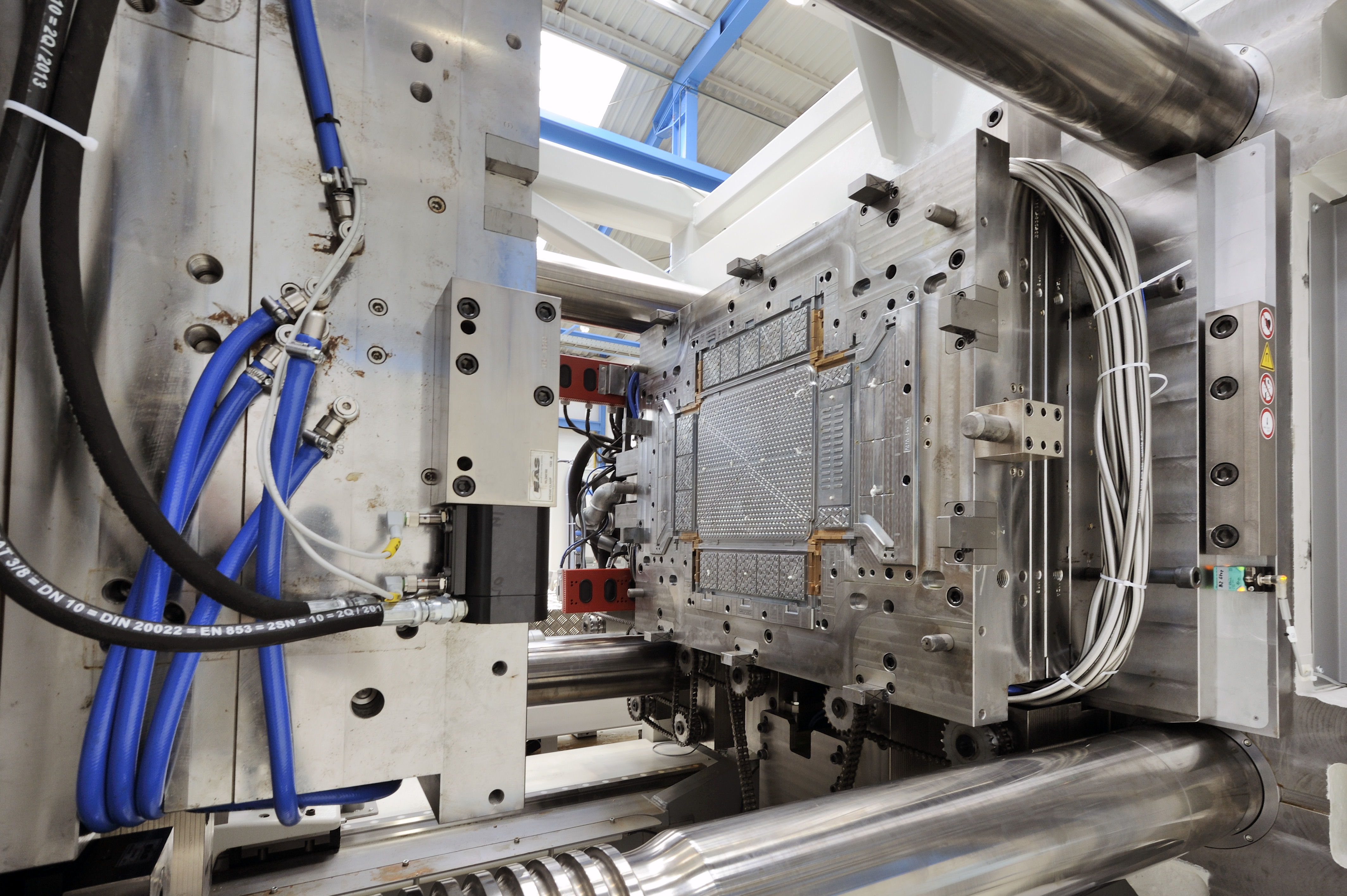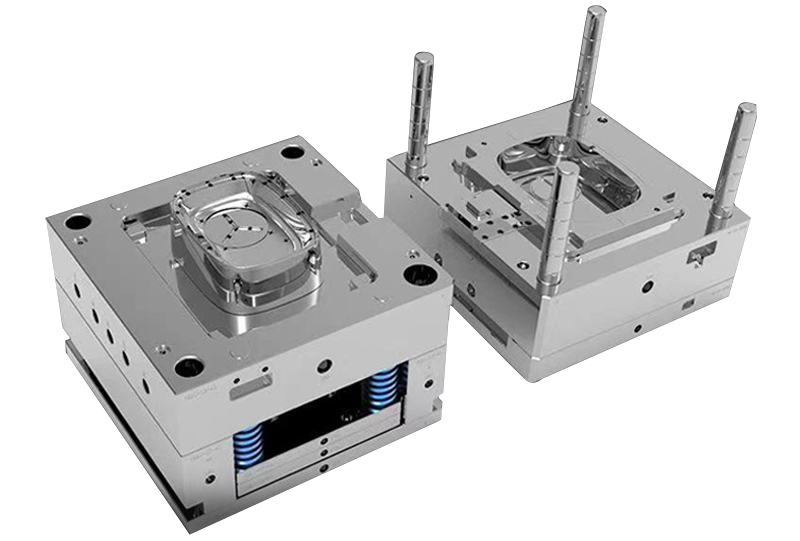Comprehending the Fundamentals of Plastic Shot Molding Procedures
Plastic injection molding acts as a cornerstone of modern manufacturing, giving a methodical method to creating intricate elements with precision. This procedure not just encompasses the fundamental actions of melting and injecting materials into mold and mildews but additionally entails a nuanced understanding of different affecting elements, such as temperature level and pressure. As markets significantly require efficiency and top quality, the intricacies of this methodology become more important. Discovering these essential components could reveal how even small modifications can lead to significant improvements in production outcomes, increasing inquiries concerning the possibility for advancement in this well-known procedure.
What Is Plastic Injection Molding?
Plastic injection molding is a commonly utilized manufacturing process that transforms thermoplastic and thermosetting materials right into accurate and intricate shapes. This method is favored for its ability to create high volumes of similar get rid of phenomenal precision, making it a crucial technique in numerous industries, including auto, customer goods, and medical devices.
The procedure entails melting the picked plastic material and injecting it right into a mold under high pressure. The mold, made to the specifications of the wanted component, allows the molten plastic to form as it strengthens and cools down. As soon as the product has set, the mold and mildew is opened up, and the completed component is expelled.
Plastic injection molding supplies several benefits, including minimized waste, uniformity in manufacturing, and the capacity to incorporate intricate designs that might be challenging with various other producing techniques. Furthermore, it sustains a wide range of materials, each supplying special residential properties that can be tailored for particular applications. As markets remain to introduce, plastic shot molding continues to be at the center, making it possible for the development of sophisticated products that meet evolving consumer needs.
The Shot Molding Process
The shot molding procedure is an innovative strategy that includes numerous vital phases to generate top notch plastic parts. Plastic pellets are fed into a heated barrel where they are melted right into a thick fluid. This molten plastic is after that infused under high pressure into a precision-engineered mold, which forms the product into the desired form.
As soon as the mold and mildew is filled up, the plastic is permitted to cool and solidify, taking the shape of the mold cavity. Air conditioning time is vital, as it influences the cycle time and the last homes of the molded part. After sufficient air conditioning, the mold opens, and the finished part is ejected making use of ejector pins.

Products Made Use Of in Shot Molding
Different products can be utilized in the injection molding process, each offering unique properties that cater to specific applications. The most frequently used products consist of thermoplastics, thermosetting plastics, and elastomers.

Thermosetting plastics, like epoxy and phenolic materials, go through a chemical modification during the curing procedure, resulting in a rigid, inflexible structure. These materials are suitable for applications calling for high warmth resistance and architectural stability, frequently utilized in electric insulators and automobile parts.
Elastomers, including silicone and rubber-based products, give adaptability and strength. Their one-of-a-kind buildings make them appropriate for applications that require elasticity, such as seals and gaskets.
Additionally, specialized materials like bio-based plastics and compounds are gaining traction for their environmental advantages and boosted efficiency qualities, broadening the scope of injection molding applications in various markets. Understanding the buildings of these materials is important for picking the appropriate kind for particular tasks.
Benefits of Shot Molding
Injection molding stands apart as an extremely efficient manufacturing process that offers numerous benefits for generating complicated get rid of accuracy. Among one of the most considerable benefits is the ability to create detailed designs that would certainly be challenging or impossible to accomplish with other techniques (Plastic Injection Molding). The procedure permits for limited tolerances and in-depth functions, making sure high-grade elements
In addition, shot molding is known for its quick manufacturing abilities, making it a perfect option for high-volume production. When the mold and mildew is produced, parts can be produced swiftly, lowering lead times and increasing general efficiency. This effectiveness not only decreases production expenses but likewise offers an one-upmanship out there.
The flexibility of materials used in injection molding even more boosts its appeal. A variety of thermoplastics and thermosetting polymers can be utilized, allowing manufacturers to select products that finest meet their particular requirements, weblink including warmth, strength, and versatility resistance.
Additionally, the procedure reduces waste, as excess product can typically be reused and recycled. This sustainability aspect adds to a lowered find ecological influence, making shot molding a liable manufacturing selection. Overall, the advantages of injection molding make it a recommended approach for many industries.
Elements Affecting Product High Quality
While numerous elements can affect product high quality in injection molding, comprehending these elements is critical for achieving optimal results. Key facets consist of product choice, refining criteria, and mold and mildew design.
Product option plays a crucial duty, as various polymers show special properties that influence flowability, toughness, and thermal security. Insufficient material option can result in problems such as warping or incomplete filling.
Processing criteria, consisting of stress, cycle, and temperature time, should be carefully controlled. Variants in these setups can cause incongruities partially dimensions and surface finish. Excessively high temperature levels may Get the facts trigger degradation of the polymer, while insufficient pressure can result in brief shots.
Mold layout is similarly essential, as it determines the flow of the molten plastic and the cooling process. Improperly made molds might lead to unequal air conditioning prices, causing dimensional mistakes and recurring anxieties.

Verdict
In final thought, plastic shot molding acts as an important production procedure that enables the efficient production of top quality components. Proficiency of the shot molding procedure, including the understanding of products and the influence of various elements on product high quality, is essential for achieving optimal results. The advantages of this approach, such as cost-effectiveness and design adaptability, further underscore its value across several industries, strengthening its condition as a favored option for high-volume production.
Plastic injection molding serves as a foundation of modern-day manufacturing, giving a systematic technique to generating complicated parts with accuracy.Plastic shot molding uses a number of advantages, consisting of lowered waste, uniformity in production, and the ability to incorporate intricate designs that might be challenging with various other producing techniques (Plastic Injection Molding). As sectors continue to innovate, plastic shot molding stays at the leading edge, enabling the advancement of sophisticated products that satisfy advancing consumer needs
The injection molding process is a sophisticated strategy that entails several crucial stages to produce high-grade plastic elements.In final thought, plastic shot molding serves as a vital production procedure that enables the effective manufacturing of high-grade elements.
Comments on “Exploring the Future of Plastic Injection Molding in the Manufacturing Industry”